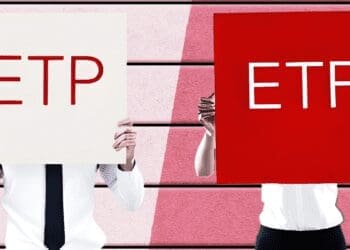Over the past few years, the ERC token specification has become the de facto standard for Ethereum tokens. In other words, most Ethereum contracts available today comply with ERC. In this post, let’s first look at the ERC standard to understand how to construct your Ethereum token, especially when creating an ERC-20 token.
Crypto Currency Tokens
Cryptocurrency tokens can have intrinsic worth similar to coins or offer additional functionality through fundraising, voting (or governance), points for loyalty programs, or involvement in charitable programs.
The purpose of cryptocurrency tokens can vary. Some, like Dogecoin (DOGE), are used as investment vehicles, while others enable token trading on platforms like Ethereum (ETH). Other tokens can be used to raise money for a brand-new good or service that your group may choose to provide by creating an ERC-20 token.
An Initial Coin Offering (ICO) with cryptocurrency tokens can release a token similar to an initial public offering, often involving creating an ERC-20 token. Other use cases include representing stock in a firm, providing ownership evidence, serving as a pass to enter or use a DApp, acting as a voting device, being part of a loyalty program, or raising money for a good cause.
ERC Tokens-Successful & Attractive
- ERC20 tokens are straightforward and simple to deploy.
- Because blockchain-based marketplaces and cryptocurrency wallets require a single, defined set of commands to connect with the various tokens they manage, the ERC20 standard effectively overcomes this issue. This covers both the rules for how different tokens interact with one another and the rules for buying tokens.
It was the first widely used specification to establish uniformity for Ethereum tokens. Although by no means the first, due to its popularity, it swiftly rose to the status of industry standard for creating an ERC-20 token.
Token Creation

For groups and teams thinking about community building or fundraising options, tokenization has become the norm.
Tokenization assigns a token to anything of value in the real world, a concept gaining popularity. As organizations, teams, and individuals digitize their services for streamlined transactions, many expect tokens to become a universally accepted transaction method.
Tokens themselves provide users with several advantages in addition to staying ahead of the curve, including the capacity to entice users to join more actively in a specific decentralized finance (DeFi) project. Token owners can simply join a cause or a business that corresponds with their own objectives and receive rewards for their participation by creating an ERC-20 token.
Best Platform for Token Creation
Ethereum continues to be at the forefront of DeFi, providing users access to a vibrant community with various features.
Depending on a user’s demands, Solana (SOL) and Ethereum remain the most widely used blockchains. However, since its inception, the ERC-20 standard on Ethereum has been the preeminent method for developing new tokens, making it the top option for use cases, including crowdsourcing and initial coin offerings (ICOs).
The standard provides a straightforward user interface suitable for several applications. Ethereum is at the vanguard of DeFi as a pioneer in DApp development and an ecosystem to many well-known platforms, making it an obvious choice with thorough instructions for anyone developing their first token and creating an ERC-20 token.
ETH Contract Deployment
It is now appropriate to publish our contract on the blockchain. Following deployment, each network node will receive our contract, and the system will transmit any changes to all involved nodes.
Truffle is a common deployment tool used by Ethereum developers. However, for this piece’s minimal requirements, Truffle is overkill; Remix is a straightforward online application that will do.
Installing the MetaMask plugin on your browser and having at least some Rinkeby Ether in your Rinkeby (Ethereum test network) account are prerequisites for using it. We won’t go into great depth since these are rather straightforward steps.
If you haven’t installed either, visit MetaMask and Rinkeby for download links and detailed installation and usage instructions.
How Do Users Make Tokens?
Modern platforms make it easier for users to fill out the details of their proposed token without coding or technical knowledge, which is necessary for establishing a smart contract.
When creating a token, the author must provide its supply, name, and number of auxiliary functions. After this phase, a smart contract deployment, QA testing, and blockchain deployment will follow. Newer systems have made the process simpler so that anyone may deploy their own token, unlike earlier platforms, where users often needed a basic understanding of coding.
Student Coin Terminal is one of these systems that enables users to design their own ERC-20 coin. By choosing Wallet Connect or MetaMask to connect their Ethereum wallet or by clicking “Get wallet,” users can begin the process of creating tokens and effectively creating an ERC-20 token.
Then, they will have to add enough money to cover the cost of contract deployment and token setup. After laying the groundwork, users can set up their tokens using a straightforward structure that allows them to finish a simple form.













Discussion about this post